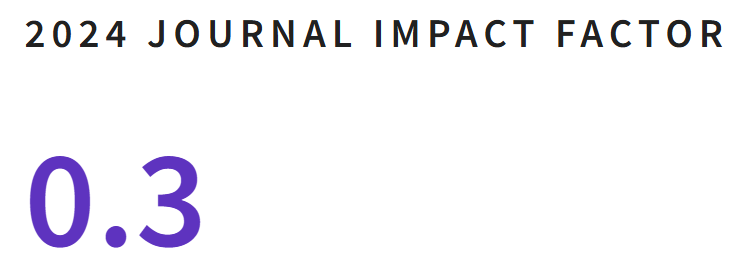The Trends in the Application of Single Window for Trade
DOI:
https://doi.org/10.35588/spvkx104Keywords:
trade facilitation, single window, Information TechnologyAbstract
In a context of increasing globalization and digitalization, single windows for trade have assumed a fundamental role as a tool to streamline and facilitate international business operations. This scientific article focuses on the analysis of the most recent trends in the implementation of single windows for trade, highlighting four areas of particular interest that are shaping the current landscape in this field.
The first trend is related to the implementation of a national single window in a country instead of implementing various "limited" single windows. The following trend involves including various sectors of services in the national single window, from regulatory services to private services, in the logistics and transportation sphere. The third trend is related to the transformation of national systems into global trade facilitation platforms that allow uninterrupted trade. Compared to the single window, trade platforms offer multiple solutions and are capable of covering a wide range of goods, services, and international trade participants not only in a specific sector but across the entire supply chain. These trends represent an ongoing evolution in the pursuit of simplifying and enhancing international trade, adapting it to the changing demands of the globalized economy.
Downloads
References
African Alliance for Electronic Commerce. (2017). Practical implementation Guide of single windows for foreign trade.
Choi, J. Y. (2011). A Survey of Single Window Implementation. https://www.wcoomd.org/-/media/wco/public/global/pdf/topics/research/research-paper-series/17_sw_survey-analysis_choi_en.pdf?la=en
Goldby, M. (2019). Facilitating the transition to paperless trade: The role of single windows. En Sheela Rai, Janne Winn (Ed.), Trade Facilitation and the WTO, (pp. 36-56). United Kingdom: Cambridge Scholars Publishing.
Hummels, D., Ishii, J. y Yi, K-M. (2001). The nature and growth of vertical specialization in world trade. Journal of International Economics, 54(1), 75-96. https://doi.org/10.1016/S0022-1996(00)00093-3
Jaipragas, B. (2017). Free trade for minnows: how Alibaba gave Malaysia’s e-hub hopes a boost. This week in Asia. https://www.scmp.com/week-asia/business/article/2119408/free-trade-minnows-how-alibaba-gave-malaysias-e-hub-hopes-boost?campaign=2119408&module=perpetual_scroll_0&pgtype=article
Keretho, S. y Pikart, M. (2013). Trends for Collaboration in International Trade: Building a Common Single Window Environment. Geneva: United Nations. https://unece.org/fileadmin/DAM/trade/Publications/ECE-TRADE-411.pdf
Kramer, W., Jenkins, B. y Katz, R. (2007). The Role of the Information and Communications Technology. Cambridge: Kennedy School of Government, Harvard University.
Liu, H-W. y Lin, C.-Fu. (2020). Artificial Intelligence and Global Trade Governance: A Pluralist Agenda. Harvard International Law Journal, 61(2), 407-450. https://ssrn.com/abstract=3675505
Mathews, J. T. (1997). Power Shift. Foreign Affairs, 76(1), 50-66. https://doi.org/10.2307/20047909
McLinden, G., Fanta, E., Widdowson D, y Doyle, T. (Eds.) (2011). Border Management Modernization. Washington: The World Bank. https://openknowledge.worldbank.org/bitstream/handle/10986/2544/588450PUB0Bord101public10BOX353816B.pdf?sequence=1&isAllowed=y
McMaster, J. y Nowak, J. (2007). The Evolution of Electronic Trade Facilitation: Towards a Global Single Window Trade Portal. University of South Pacific, Suva. https://www.researchgate.net/publication/228581401_The_Evolution_of_Electronic_Trade_Facilitation_Towards_a_Global_Single_Window_Trade_Portal
Neville, M. (2016). Trade Facilitation and Trade Enforcement Act of 2015. Journal of International Taxation, 27(5).
Organización Mundial de Aduanas. (2012). Compendio de la OMA: como construir entorno de ventanilla única.
Organización Mundial de Aduanas. (2018). Going beyond the national Single Window. WCO News, 87. https://mag.wcoomd.org/magazine/wco-news-87/going-beyond-the-single-window/#_ftnref2
Rodríguez De Las Heras, T. (2019). Platform Based Models for Facilitating International Trade: A Legal Analysis. En Sheela Rai, Janne Winn (Ed.), Trade Facilitation and the WTO (pp. 56-71). United Kingdom: Cambridge Scholars Publishing.
Sourdin, P. y Pomfret, R. (2012). Trade Facilitation Defining, Measuring, Explaining and Reducing the Cost of International Trade. Edward Elgar Publishing, Cheltenham.
Tavengerwei, R. (2018). Using Trade Facilitation to Assist MSMEs in E-Commerce in Developing Countries. Journal of International Economic Law, 21(2), 349-378. https://ideas.repec.org/a/oup/jieclw/v21y2018i2p349-378..html
UN/CEFACT. (2005). Recommendation No. 33 Recommendation and Guidelines on Establishing a Single Window: to Enhance the Efficient Exchange of Information Between Trade and Government. ECE/TRADE/352.
UN/CEFACT. (2017). Technical Note on Terminology for Single Window and other electronic platforms. ECE/TRADE/C/CEFACT/2017/10. https://unece.org/fileadmin/DAM/cefact/GuidanceMaterials/WhitePapers/WP-TechNoteSWTerminology_Eng.pdf
UN/CEFACT. (2019). Recommendation № 37 Single Submission Portal. https://unece.org/DAM/trade/Publications/ECE_TRADE_447E_CF-Rec37.pdf
UN/CEFACT. (2020). Recommendation No. 33 Recommendation and Guidelines on Establishing a Single Window: to Enhance the Efficient Exchange of International Trade Information Between Trade and Government.
UNNExT, ESCAP y UNEC. (2013). The Single Window Planning and Implementation Guide. https://unece.org/fileadmin/DAM/trade/Publications/ECE-TRADE-404_SingleWindow.pdf
Van Stijn, E., Klievink, B. y Tan, Y.-H. (2011). Innovative ICT solutions for monitoring and facilitating international trade. Network Industries Quarterly, 13(3), 26-29. http://resolver.tudelft.nl/uuid:7f62cb33-e614-48d5-a6d6-10d5915ce4f6
Winn, J. K. (2019). The Promise of Global Digital Trade Facilitation Platforms. En Sheela Rai, Janne Winn (Ed.), Trade Facilitation and the WTO (pp. 72-85). United Kingdom: Cambridge Scholars Publishing.
Winn, J. K. y Chiang, Y-Sh. (2021). The Next Great Global Knowledge Infrastructure Land Rush Has Begun Will the USA or China Prevail?. En Shin-yi Peng, Ching-Fu Lin y Thomas Streinz (Ed.), Artificial Intelligence and International Economic Law: disruption, regulation, and reconfiguration (pp. 319-337). Cambridge University Press.
Downloads
Submitted
2023-09-20Published
Versions
- 2024-06-05 (5)
- 2024-05-10 (4)
- 2024-05-09 (3)
- 2024-04-30 (2)
- 2024-04-25 (1)
Issue
Section
License
Copyright (c) 2024 People and Technology Management Journal

This work is licensed under a Creative Commons Attribution-NonCommercial-NoDerivatives 4.0 International License.










